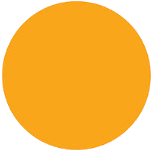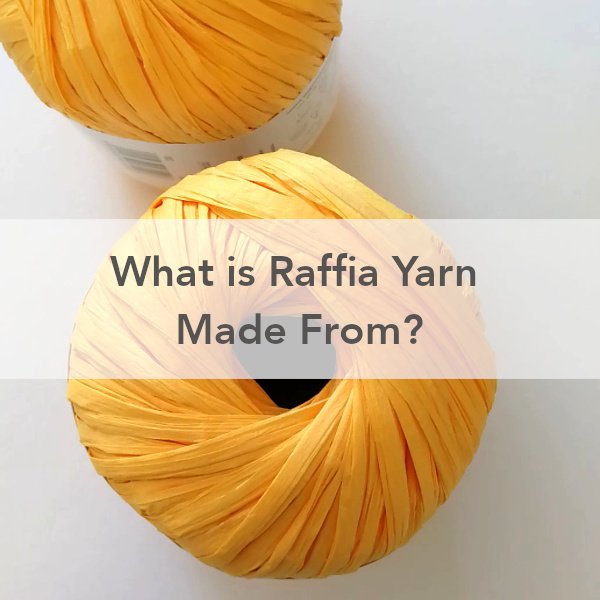Is Acrylic Yarn Made of Plastic?
The following article may contain affiliate links. This means that if you make a purchase from these links, I may receive affiliate commission at no additional cost to you. I only recommend yarns which I believe are sustainable and suitable to the article.
What is Acrylic Yarn Actually Made of?
The quick answer is: Oil which is then turned into plastic.
So, the answer to the questions, is acrylic yarn plastic, is yes! It is 100% plastic and man made. It is made using a polymer called Polyacrylonitrile and, like all synthetic polymers, it is manufactured from petroleum oil.
To make acrylic yarn, plastic pellets are heated and spun through small holes to create long strands. They are then cooled down to form threads which make up the yarn.
Is Acrylic Yarn the Same as Polyester Yarn?
They are very similar. They are both made of synthetic materials derived from petroleum oil but they use different polymers. Polyester is made using ethylene glycol and terephthalic acid.
What Difference Does This Make to the Yarn?
Using these different polymers makes polyester more breathable and also more resistant to wrinkles and shrinking than acrylic yarn.
Don’t let this fool you though. Polyester is still not as breathable as plant based yarns like cotton, hemp and linen.
Is Acrylic Yarn Bad for the Environment
Acrylic Yarn is Plastic so it is not a Sustainable Yarn
Petroleum oil is a non renewable raw material and, based on a report from 2017 by the Ellen MacArthur Foundation, we’re currently using roughly 342 million barrels of oil every year just to make textiles. Yikes! There are predications that tell us that we may run out of oil by as soon as 2030.
It Creates a lot of Waste and Pollution
Both acrylic and polyester do not easily biodegrade. In fact, they shed. Tiny particles of plastic (microplastics) shed from our clothing every time they are worn, washed and dried. These microplastics end up in our water supply, in the oceans, in the soil, in our food and, even more scarily, in the air that we breathe. Roughly around half a million tons of plastic are released into our oceans each year just from washing our clothes. Gulp!
The production of these fibres also releases heavy metals and toxic chemicals into the environment. On top of that, there is a high chance of oil leaks and spills from the extraction processes and transport which cause huge amounts of water damage.
It Uses a lot of Energy to Produce
The amount of energy used to produce and process acrylic and polyester yarns is astonishing in comparison to other natural fibres. Polyester and acrylic are two of the highest energy users according to Oeco Textiles. Acrylic uses roughly three times as much as cotton and as much as 17 times!! as much as flax/linen per kilogram of fibre.
Why Do Crafters Love it so Much?
Aside from all the bad facts about acrylic and polyester yarns, they have been much loved by crafters because they are affordable, light weight, they can be easily washed and tend to be stretchy and soft to wear. Making it a great yarn to use for clothing.
All these positives influence our consumerism. We as buyers, don’t see the negatives hidden behind the production process unless we really look into it and as someone who advocates for the environment and our wildlife, I started to look into it and was shocked.
I still have some acrylic yarn in my stash but I have decided to not buy any more based on what I know now.
Is it ok to Use Sometimes?
It depends. Personally, I would avoid buying anymore new synthetic yarns because this means we are supporting the production of it and telling those big companies that we still want them to make it.
If you have some left over in your stash then you could use it for something that won’t be washed frequently or worn a lot. However, there is still the issue of it shedding microplastics into your home environment.
What About the Clothing I’ve Already Made or Have?
We’ve all got acrylic jumpers in our winter wardrobes, who hasn't? I’ve been trying to transition to an all natural wardrobe for sometime now, but I still have a few synthetic items that I haven’t parted with yet.
If you have clothing that is in good condition, throwing them away is not the solution, as they just end up in landfill. The best thing to do is to keep them and to invest in a Guppy Friend bag or a washing machine filter to collect all the microplastics during every wash cycle.
If you just don’t want to wear or wash them anymore, you can sell them in your local market place or give them away in your local buy nothing groups but there is no guarantee that the new owners will be as careful as you when washing.
Do you have items that are not in good condition anymore? Look into local clothes recycling projects first. If none exist then you can always use them for stuffing your dog or cat beds :)
How About Recycled Plastic Yarns?
Recycled plastic yarns are great in one way because they help to remove plastics from our oceans and our environment to make something new and useful again. It also reduces the need for making virgin polyester and acrylic and thus reduces the amount of energy used and CO2 being released into the atmosphere.
However, there is also a down side because the issue of the fibres shedding microplastics hasn’t been resolved. So they will eventually end up back where they started.
What Alternatives are There?
There are many plant based alternatives that give similar properties to acrylic or polyester yarn, it all depends on your project and what you want from it. Here are some recommendations that I personally love to use.
Light Weight and Breathable Yarns
These yarns are ideal for making light weight clothing for the summer months. Hemp and linen yarns are both breathable and airy options that will be kind to your skin and keep you cool when it’s hot outside.
Soft and Warm
These options are of a heavier weight of yarn making them perfect for your next winter jumper.
Sources
[1] - Britannica
[2] - IGTPAN
[3] - Composites World
[4] - SPGlobal
[5] - Carnegie Mellon University
[6] - CFDA







